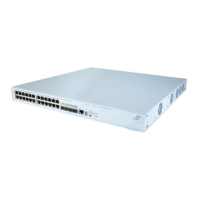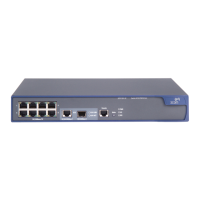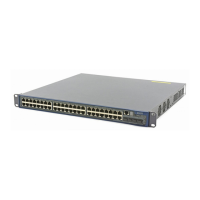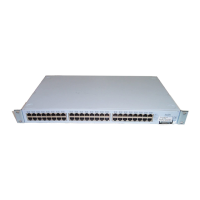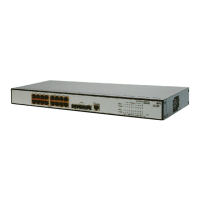222 CHAPTER 11: 802.1X CONFIGURATION
Once enabled globally, the network login needs to be enabled on a per port basis.
This can be done in one of two ways:
■ To enable dot1x on one port, enter the interface of the port and enable dot1x
on the port. For example:
[4500-xx]interface ethernet 1/0/7
[4500-xx-Ethernet1/0/7]dot1x
802.1X is enabled on port Ethernet1/0/7
[4500-xx-Ethernet1/0/7]
■ To enable dot1x on more than 1 port, enter the global dot1x command as
follows:
[4500-xx]dot1x interface Ethernet 1/0/7 to Ethernet 1/0/12
Ethernet 1/0/14 to Ethernet 1/0/20
802.1X is enabled on port Ethernet1/0/7 already
802.1X is enabled on port Ethernet1/0/8
802.1X is enabled on port Ethernet1/0/9
802.1X is enabled on port Ethernet1/0/10
802.1X is enabled on port Ethernet1/0/11
802.1X is enabled on port Ethernet1/0/12
802.1X is enabled on port Ethernet1/0/14
802.1X is enabled on port Ethernet1/0/15
802.1X is enabled on port Ethernet1/0/16
802.1X is enabled on port Ethernet1/0/17
802.1X is enabled on port Ethernet1/0/18
802.1X is enabled on port Ethernet1/0/19
802.1X is enabled on port Ethernet1/0/20
[4500-xx]
802.1X login is now enabled on the port. When a device with an 802.1X client
connects to the port, the user will be challenged for a username and password.
The username should be in the form “user@domain” where “domain” is the
name of the domain that was created on the Switch. This will tell the Switch
which domain, and subsequently which RADIUS server the user is associated with.
By default, the username sent to the RADIUS server for verification will be in the
form user@domain.
You can send the username without the domain extension to the RADIUS server
This can be changed under the RADIUS scheme as follows:
[4500-xx-radius-NewSchemeName]user-name-format without-domain
Switch Login
The Switch 4500 supports Switch login, to allow multiple users access to the
management interface of the switch.
Once the RADIUS scheme and domain have been set up, see Domain and RADIUS
Scheme Creation, then switch login is enabled.
By default, when you use the username admin to login, you are actually logging in
as "admin@local". If no domain is given, the "@local" is automatically added at

